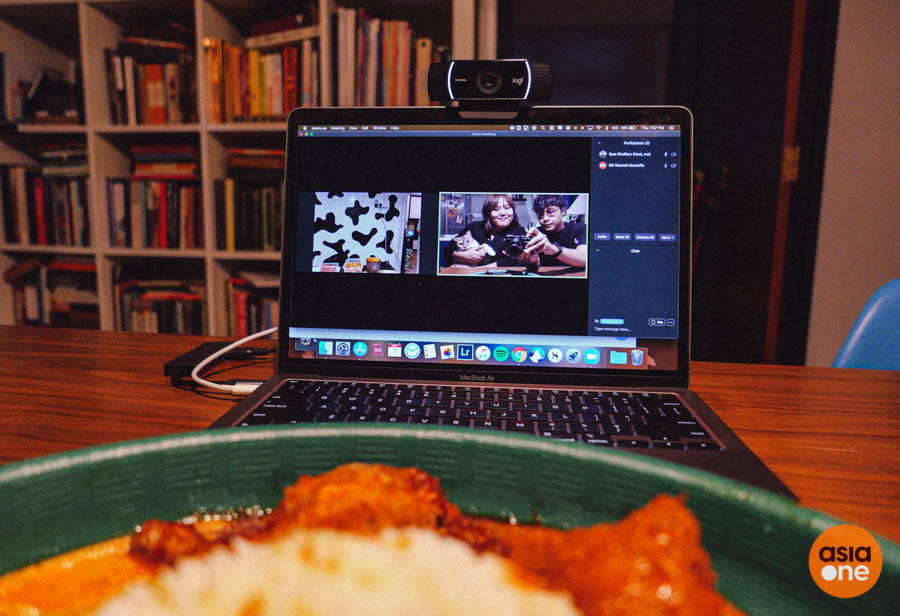How to host a virtual Iftar for Ramadan feasts with family and friends during circuit breaker


Ramadan — a month of increased spiritual devotion for observing Muslims and a time to foster tighter relations with the family by getting together for a meal after sundown.
But in case you haven’t noticed, the whole "getting together” part is pretty tough considering the current circumstances. Having the circuit breaker in place means holding a big Iftar (the sunset meal to break the fast) with family and friends can’t take place like we used to.
Luckily, we have the technology to help us do so even though it’s clearly not as good as the real thing. Still, it can come pretty close.
Virtual Iftars are more than possible with the bevvy of video conferencing apps out there to download and use for free, and capable enough to host a large circle of people to get together for a nice meal without leaving home. Get ready to make space on the dining table, because your laptops, tablets and phones are about to be a part of the ritual.


Barring the controversies over Zoombombing, Zoom remains one of the most popular options these days for face-to-face video calls. It’s user-friendly, it’s free (for about 40 minutes of usage) and can host up to 100 people at a time in one call. Yes, yes, some hackers managed to horribly hijack a call between local students and their teacher, but the platform’s latest version sports upgraded security and privacy protocols.
So yeah, you can probably trust not getting your channel hacked in the middle of your meal. Once you’ve signed up for an account, you can schedule video calls on the website and the app itself. Be sure to set a password too just in case.

Copy the Meeting Invitation and send it out to your friends and family ahead of time so they can add it to their calendars. Of course, they too have to download the Zoom app and sign up for an account.


WhatsApp can only fit smaller groups (up to eight people in a call), but it’s certainly safer than Zoom due to its end-to-end encryption. It’s also better for folks who might not be as computer savvy or even have a good computer in the first place — WhatsApp group calls can only be done on mobile. Plus, there’s no time limit set on group calls, on top of the fact that everyone and their grandparents use WhatsApp anyway.
[embed]https://www.youtube.com/watch?v=W28Ti9WjoKc[/embed]
The host simply has to get on WhatsApp on the mobile device, click on the “Calls” tab and tap on the phone button at the bottom right corner of the screen.

Tap “New group call” and start adding participants from your list of contacts. There’s a search bar at the top for easier searching. Once you’ve got them all lined up, click the video button to start the video call. It’s best you prop up the phone or tablet somewhere on the table before that so you won’t need to constantly hold the device while eating.

Speaking of boomer-friendly apps, Facebook’s pretty widely used among the older generation — though not so much the Gen Z crowd. In any case, the platform’s still the most user-friendly of the lot, and with Messenger now having its own dedicated app for desktops, it’s a good option for virtual Iftars.
[embed]https://www.youtube.com/watch?v=8awnu2p-WNU[/embed]
Download the app on your device and form a group chat with the people in your friends list you want to call (yes, they’ll have to have a Facebook account first). At the top right-hand corner of the group chat, there’s a button for video chat — click that and it’ll immediately start the call.

What’s exciting for this option is that there’ll soon be a new feature called Messenger Rooms, where up to 50 people can drop in and out of the group video call. Room hosts can leave the chat locked or unlocked, the latter of which will mean that anyone with the link can join in.

Google Hangouts is another option to consider for now, though we don’t know if it’ll be phased out now that Google Meet (only available for those G Suite subscriptions) will be free for all.
Still, the software makes for a very capable Iftar video-conferencing tool for everyone with a Gmail account. Those who want to connect from their mobile device can download the app for free on iOS and Android, while those connecting from their computer can simply go to hangouts.google.com for the call without downloading anything.
The host simply can get the video call going by clicking the “Video Call” button before sending out invites to other email addresses or copy the room’s URL to share with others.

You can actually schedule meetings in advance too on the Google Calendar website — click the “Create” button on the top-left corner of the screen, add guests to invite and set the date and time of the meeting. Make sure to click the “Add Google Meet video conferencing” button so they’ll be able to join the call without much of a hassle.

A pro tip for hosts: kickstart the video call 10 minutes before the call to Maghrib prayers is made so everyone in the group can iron out the inevitable digital kinks before the actual eating commences. Ramadan Kareem, everyone.
ilyas@asiaone.com